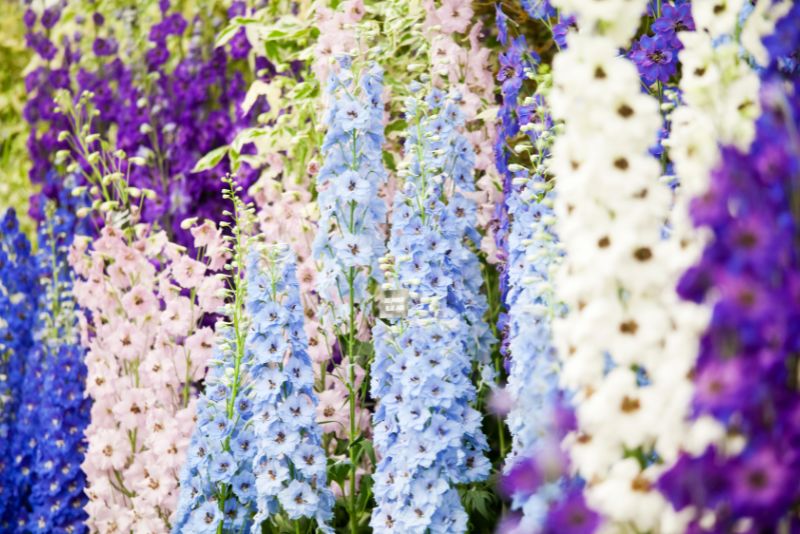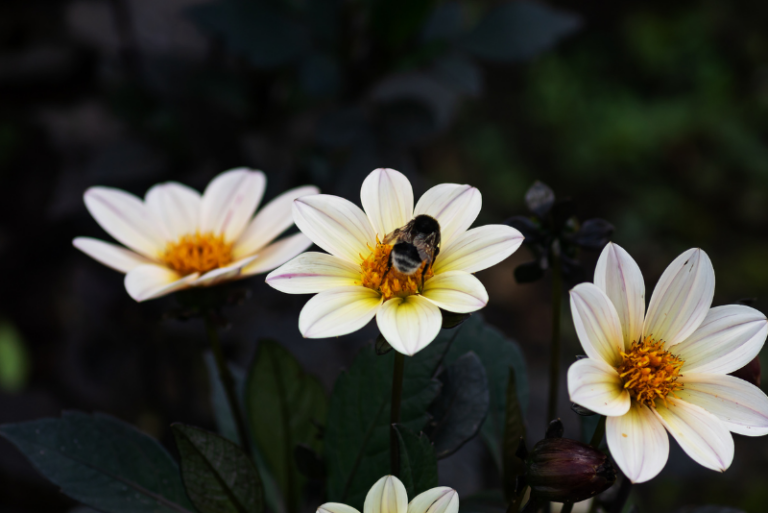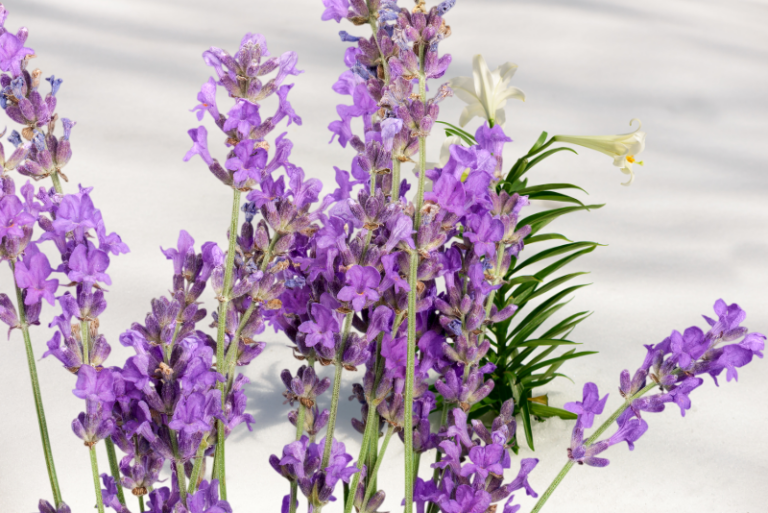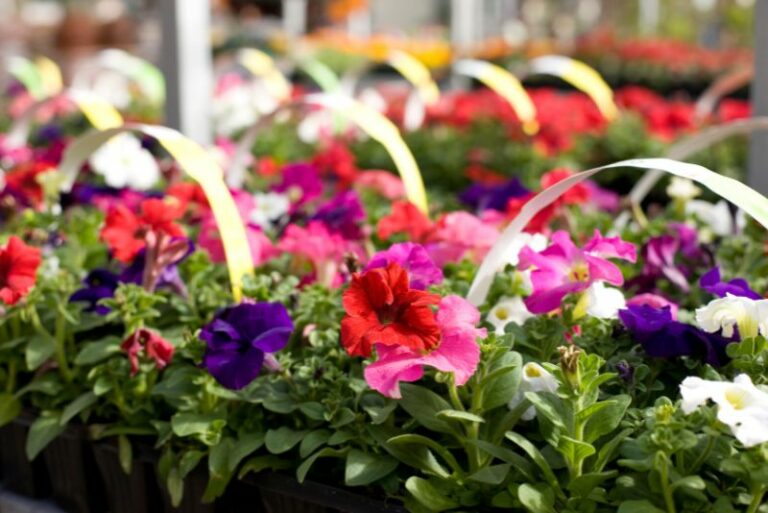The Ultimate Guide to Growing and Caring for Dreamy Delphinium Flowers
Envision a garden awash in waves of color, with towering stalks of vibrant blossoms swaying gently in the breeze — such is the ethereal beauty of delphinium flowers. For gardeners and flower lovers, cultivating these majestic spires is a pursuit that combines artistry with horticulture. In this comprehensive guide, we’ll delve deep into the world of delphiniums, providing insights into their nature, detailed care methods, and tips for creating a thriving delphinium garden that will charm both pollinators and admirers alike.
Understanding Delphinium Flowers

The delphinium, recognizable by its towering flower spikes, is a perennial known for its show-stopping display in the garden. Its name is derived from the Greek word “delphis,” meaning dolphin, due to the shape of its closed flower buds which resemble the form of a leaping dolphin. These striking blooms, often found in shades of blue, pink, white, and purple, are a symbol of cheerfulness, goodwill, and a passionate heart.
Description and Characteristics
Delphiniums are notable for their loose, unofficial classification as the ‘gentle giants’ of the garden. They can reach heights of up to 6 feet or more, which allows them to stand out dramatically against a floral backdrop. The flowers themselves are densely packed along the tall, vertical spikes, creating a visual masterpiece. The plant’s foliage is equally impressive, with lush, verdant leaves that are deeply lobed and can have a palmate or pinnate shape depending on the variety.
Varieties and Colors
There are hundreds of delphinium species and cultivars available, broadening the spectrum of colors and plant sizes. The ‘Pacific Giants’ series, for instance, offers a wide palette of hues, from indigos and lavenders to softer sky blues. ‘Black Knight’ is a popular dark-crimson variety prized for its velvety appearance, while ‘Magic Fountain’ presents more compact forms perfect for a lower-growing display.
Growing Delphiniums
For the best chance at a successful delphinium display, it’s essential to understand the ideal growing conditions and planting methods for these beauties.
Ideal Growing Conditions
Delphiniums thrive in cool, moist climates with moderate summer temperatures. They prefer well-drained, rich soil with a slightly acidic to neutral pH. Full sunlight is also important, with at least six hours of direct light daily to encourage strong stalks and vibrant flowers.
Planting and Spacing Tips
Plant delphiniums in the spring or fall when the temperatures are mild. Prepare the soil by mixing in compost to improve its moisture-retention and nutrient content. When planting, space the delphiniums about 2 feet apart to allow for their expansive growth.
Maintenance Requirements
Keep the soil consistently moist but not waterlogged. Use a balanced fertilizer once in spring before new growth appears and again in early summer. Pinch back the first set of blooms to encourage a second flush, and deadhead regularly to promote additional flowering.
Caring for Delphiniums
To help your delphiniums reach their full potential, proper care is key. From watering to warding off pests, here’s how to keep your delphiniums in top condition.
Watering Techniques
Delphiniums prefer consistent moisture, especially during the growing season and in times of drought. Water deeply, allowing the soil to absorb the water rather than merely dampening the surface. Try to water the soil directly, avoiding wetting the foliage which can lead to diseases.
Common Pests and Diseases
Delphiniums can be susceptible to certain pests, such as aphids and spider mites. Keeping the garden clean and free from weeds can help discourage these invaders. Powdery mildew and stem rot can also be a concern, so ensure good air circulation and avoid overwatering to prevent these fungal issues.
Support and Staking Methods
Given their height and the weight of their blooms, delphiniums often require staking to prevent them from toppling over. Install stakes early in the season, and secure the plant with loose ties that allow for natural movement in the wind.
Tips for a Thriving Delphinium Garden
A successful delphinium garden is more than just healthy plants; it’s about the ecosystem of the garden in its entirety. Here are advanced tips to turn your delphinium patch into a flourishing centerpiece.
Companion Planting Suggestions
Delphiniums can benefit from companions like lilies, phlox, and hollyhocks, which share similar growing conditions and can provide structural and visual contrast. Plant aromatic herbs and flowers nearby to ward off pests. Lavender and catmint can be excellent deterrents, as well as attractive additions to the garden.
Seasonal Care Guide
In the spring, apply a layer of mulch to retain moisture and keep weeds at bay. As summer progresses, monitor the soil moisture closely, watering as needed but less often if the weather is damp. Come autumn, cut back the delphinium plants to a few inches above the ground after the first frost to prepare them for the winter.
Troubleshooting Common Issues
If your delphiniums are not thriving, consider the soil quality, available sunlight, and water drainage. Yellowing leaves might indicate pests, while stunted growth could signal disease. Addressing issues promptly with proper care techniques can often remedy these common problems.
Conclusion
Delphinium flowers can fill your garden with grace and splendor, offering a profusion of colors and a touch of whimsy. By adhering to the knowledge shared in this guide, you can enjoy the uplifting presence of these dreamy blossoms, each spring like a new chapter in a floral fairy tale. Happy gardening, and may your delphiniums bring you joy and inspiration for seasons to come!






